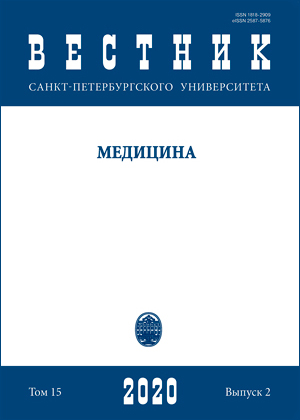Microbiological safety of marine products (seafood)
DOI:
https://doi.org/10.21638/spbu11.2020.205Abstract
Recently more and more evidence appears, proving that seafood consumers should be referred to risk group in which outbreaks of viral food poisoning and foodborne infectious diseases occurs, transmitted by food route. There are several reasons to refer seafood to a category of epidemiologically non-safe products: high microbial pollution of adjacent seas with sewage waters; many non-fish hydrocoles are natural filter feeding animals, which are infected by viruses in the process of vital activity, passing through their organism water and food particles; sufficient viruses stability in external environment, enabling them to remain intact outside of host organism during of prolong time interval. Total rate of viral material detection in seafood
samples may reach ~ 10 %. The authors by means of expertise determined virological effect of thermal seafood treatment used in housekeeping conditions and at public catering establishments for preparing mostly widespread dishes. In this paper a conclusion is made, that the use of seafood for preparing dishes, which technology does not consider sufficiently efficient in respect to viruses thermal treatment, shall include preliminary virologic survey of stuff for excluding viral pathogens and for provision safety of the corresponding food products.
Keywords:
seafood, enteroviruses, norwalk-like viruses, hepatitis A viruses
Downloads
References
References
Downloads
Published
How to Cite
Issue
Section
License
Articles of "Vestnik of Saint Petersburg University. Medicine" are open access distributed under the terms of the License Agreement with Saint Petersburg State University, which permits to the authors unrestricted distribution and self-archiving free of charge.




